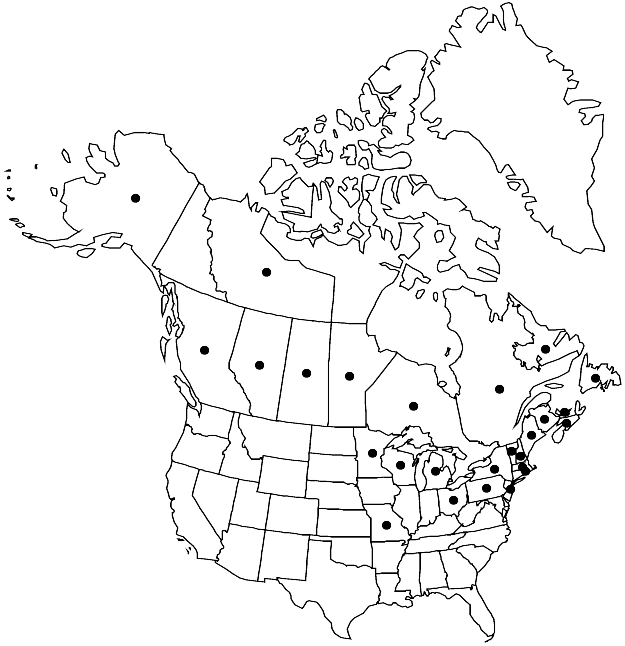Difference between revisions of "Orthotrichum elegans"
Edinburgh. J. Sci. 1: 122, plate 6 [upper right]. 1824.
FNA>Volume Importer |
FNA>Volume Importer |
(No difference)
| |
Revision as of 22:04, 16 December 2019
Plants 0.5–2.2 cm. Stem leaves stiffly flexuose when dry, lanceolate to narrowly lanceolate, 2.3–3 mm; margins strongly revolute nearly to apex, entire; apex broadly acuminate to acute; basal laminal cells elongate, walls thick, nodose; distal cells 8–10 µm, 1-stratose, papillae 1 or 2 per cell, conic, small. Specialized asexual reproduction absent. Sexual condition autoicous. Seta 1–2 mm. Capsule emergent to sometimes short-exserted, narrowly to fusiform-cylindric, 1.3–2 mm, smooth; stomata superficial; peristome double; prostome absent; exostome teeth 8, separate to base, recurved, acute, coarsely papillose; endostome segments 8, well developed, usually present when capsule is old and dry, thick, stout, of 2 rows of cells, narrower than exostome teeth, yellowish brown, coarsely papillose. Calyptra conic-oblong, smooth, sparsely hairy, hairs finely papillose. Spores 13–26 µm.
Habitat: Deciduous trees, especially Populus, conifers
Elevation: moderate elevations (200-1000 m)
Distribution

Alta., B.C., Man., N.B., Nfld. and Labr., N.W.T., N.S., Ont., P.E.I., Que., Sask., Alaska, Maine, Mass., Mich., Minn., Mo., N.H., N.J., N.Y., Ohio, Pa., R.I., Vt., Wis., Europe, Asia.
Discussion
The small plants of Orthotrichum elegans in rather compact tufts are quite different from the larger, loosely tufted plants of O. speciosum. Orthotrichum elegans also has fusiform-cylindric, totally smooth, and emergent to short-exserted capsules, while O. speciosum has long-cylindric, generally slightly 8-ribbed, fully exserted capsules.
Selected References
None.